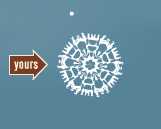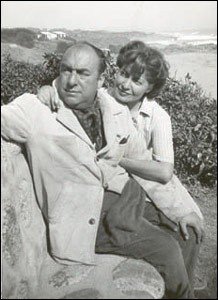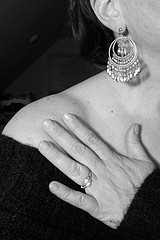Hypothyroidism has been a part of my life since the birth of my youngest. Pregnancy induced, it took almost four years to be diagnosed; my metabolism was pretty much dead in the water with almost all of the classic symptoms. Even though the medication took care of the hormonal deficiencies, it has taken me years to figure out a life style that enhanced my health. I have found that I need vitamins, supplements, low carb food and at least 45 – 60 minutes of exercise a day to maintain the vitality I need to get through each day.
"Hypothyroidism is sometimes referred to as a "silent" disease because early symptoms may be so mild that no one realizes anything is wrong. Untreated symptoms become more noticeable and severe, and can lead to confusion and mental disorders, breathing difficulties, heart problems, fluctuations in body temperature, and death.
Someone who has hypothyroidism will probably have more than one of the following symptoms:
- fatigue
- decreased heart rate
- progressive hearing loss
- weight gain
- problems with memory and concentration
- depression
- goiter (enlarged thyroid gland)
- muscle pain or weakness
- loss of interest in sex
- numb, tingling hands
- dry skin
- swollen eyelids
- dryness, loss, or premature graying of hair
- extreme sensitivity to cold
- constipation
- irregular menstrual periods
- hoarse voice
Hypothyroidism usually develops gradually. When the disease results from surgery or other treatment for hyperthyroidism, symptoms may appear suddenly and include severe muscle cramps in the arms, legs, neck, shoulders, and back.
Natural or synthetic thyroid hormones are used to restore normal (euthyroid) thyroid hormone levels. Synthetic hormones are more effective than natural substances, but it may take several months to determine the correct dosage. Patients start to feel better within 48 hours, but symptoms will return if they stop taking the medication.
Most doctors prescribe levothyroxine sodium tablets, and most people with hypothyroidism will take the medication for the rest of their lives. Aging, other medications, and changes in weight and general health can affect how much replacement hormone a patient needs, and regular TSH tests are used to monitor hormone levels."
Mary Shamon is the best lay expert on thyroid issues. I have her book “The Thyroid Diet”. Her latest newsletter gives these tips for getting through the winter:
Winterize Your Thyroid
From Mary Shomon,Your Guide to Thyroid Disease.
10 Tips For Surviving the Winter Cold
It's that time of year when much of the country is up to its neck in freezing cold weather, and pockets of snow, ice, and cold have taken hold all around the nation. Surviving the cold weather season means it's time to pay attention to some tips that can help you "winterize" your thyroid, and enjoy better health during these colder months.
1. Get your TSH checked.
Cold weather can increase your body's need for thyroid hormone, make you more hypothyroid, and may cause your TSH to rise. If you notice hypothyroid symptoms worsening as the weather gets colder, it's worth having your blood levels evaluated. You may need a slight increase in your thyroid hormone replacement dosage. Some doctors even make it a standard practice to raise their patients' dosages slightly during colder months, in order to meet the body's requirements.
2. Tune up your TSH.
If you're still having significant hypothyroid symptoms, it's a good time to check in with your physician to discuss whether you are at the optimum TSH level for you. Some patients feel best when TSH levels are at low-normal range, so it's worth discussing with your doctor. Keep in mind, as of late 2005, the recommended "normal range" for TSH is .3 to 3.0, but most labs and doctors are still using the .5 to 5.0 range Some practitioners has stated that you can have hypothyroidism symptoms at levels of 2.0 and above.
3. Make sure you're on the optimal thyroid drug for you.
Some patients feel better on the natural Armour thyroid, others need the addition of a T3 drug like Cytomel, and some do best when switching from one brand of synthetic levothyroxine, i.e., Synthroid or Levoxyl, to another, i.e., Unithroid. Make sure you're on the right drug that relieves the majority of your hypothyroidism symptoms.
4. Start exercising.
Cold weather blues may make you less likely to work out, but there's no better time to begin a regular program of exercise. Whether you join a gym, start a walking program, take a yoga class, or do Pilates tapes, even a gentle exercise program can help banish the blues and relieve stress -- not to mention help avoid winter weight gain.
5. Get some sunlight every day.
There's evidence that exposure to sunlight affects hormones that have an impact on both brain chemistry and the endocrine system. Even if you don't suffer from a full-out case of "seasonal affective disorder," 20 to 30 minutes a day of outdoor light exposure can help ward off fatigue and depression. My doctor's own tip...if you don't want to be outside for prolonged periods when it's cold, go run errands in your car, but keep the window open, so you are exposed to the natural sunlight. (Keep in mind, wearing sunglasses will reduce the benefit of the sunlight.) If you have a more pronounced seasonal affective disorder, and find yourself gaining weight and feeling significantly depressed during the colder months, consider light therapy.
6. Eat less sugar.
While a cold day may say hot chocolate and cookies, that may be the worst thing you can do. Many people with thyroid conditions find that they are susceptible to processed sugar, in a number of different ways. They may have some underlying yeast overgrowth candidiasis, or they may have some level of insulin resistance, or they may have some autoimmune susceptibility or food allergies to processed sugars. But with the double whammy of winter weight gain and depression both being factors that can be affected by too much sugar in the diet, it makes sense to bypass sugary treats as much as possible, in favor of healthier alternatives
7. Get enough sleep.
The average American doesn't get enough sleep. Add a thyroid condition to the mix, and it's clear that many thyroid patients are walking around in a state of chronic sleep deprivation. Autoimmune conditions, hormonal imbalances and difficulty losing weight are all aggravated by insufficient sleep, so it's critical that you make sure you get your zzzz's. How much do you need? The typical adult without a thyroid problem need seven to eight hours -- thyroid patients probably need even more. And in the winter, our bodies seem to need even a bit more. So forego a bit of late night television in favor of a few extra winks, and your body will thank you for it.
8. Reduce your stress.
With work, families, activities and other stressors everpresent, there's no better time for your health to incorporate a form of stress reduction into your daily activities. Keep in mind that different types of stress reduction work best for different people. Some respond well to needlework, or crafts, such as beading or quilting. (For me, for example, crocheting is an excellent stress-buster.) Other people find mind-body exercise such as yoga or tai chi highly effective. Prayer or meditation can be the right stress reduction technique for some. Even remembering to taking frequent stretch breaks while working at your computer can go a long way toward reducing stress.
9. Avoid the flu.
Flu seems to be going around full steam these days, and if you haven't succumbed, you can still avoid it
10. Go with the flow...
Sometimes, you just need to recognize that cold, winter days are nature's way of telling us to slow down. Our new contributor for 2005, columnist C. Geraghty, has some profound insights on the emotional and mind-body aspects of "The Winter Blues" that are well worth reading.




















